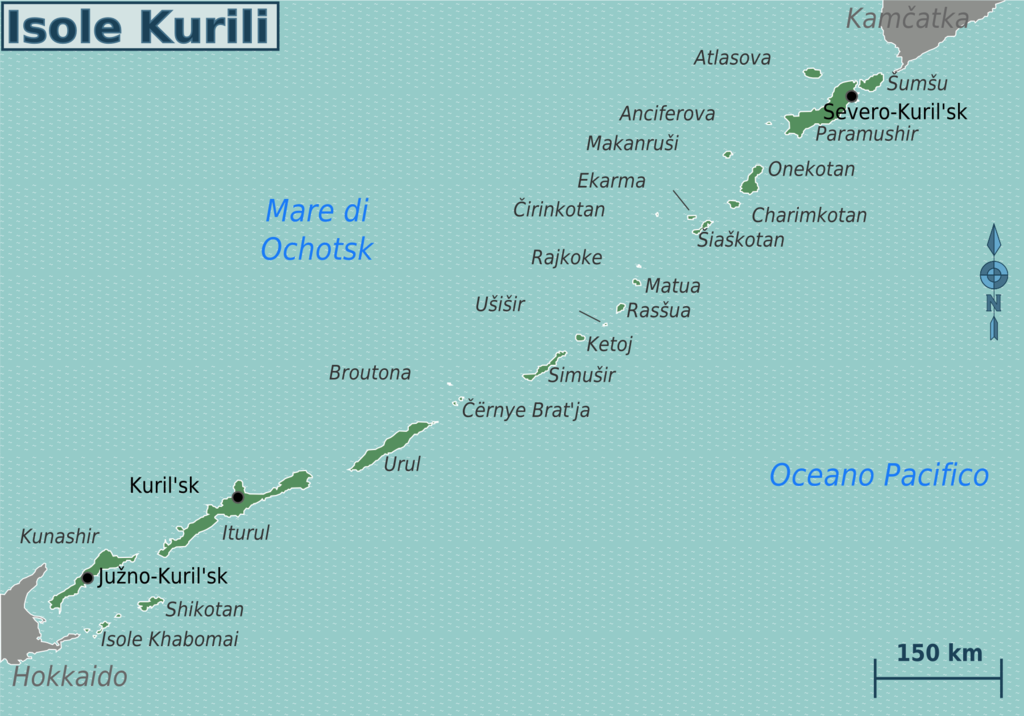The new American administration is expected to pressure Russia to return the Kuril Islands to Japan. Moscow has already started deploying modern sophisticated weapons to the region, while Washington is sending signals that the disputed territory could be another point of confrontation between the West and Russia.
The chain of islands – stretching between the Japanese island of Hokkaido at the southern end and the Russian Kamchatka Peninsula in the north – has been an integral part of Russia since 1945. It is a territory that the Soviet Union conquered at the end World War II after Imperial Japan was defeated. Ever since, the ownership of Iturup, Kunashir, Shikotan Islands and the Habomai Islands has been challenged by Tokyo. Over the past few years, Russian officials, including President Vladimir Putin, negotiated the status of the Kuril Islands with Japanese leaders, although no progress has been made. However, the very fact that the Kremlin got involved into talks about the status of the Russian territory was interpreted as a sign of weakness. Still, Moscow never went beyond usual rhetoric on a need to accelerate negotiations based on the 1956 document, which stated that the Habomai islets and Shikotan would be handed back to Japan, and the question of Kunashiri and Etorofu was to be settled during negotiations for a peace treaty.
At this point, the Kremlin is showing no signs that it is willing to return any of the disputed islands to Tokyo. Instead, Russia started militarizing the Kuril Islands. Moscow is reportedly deploying S-300V4 systems to the region, as well as MiG-3BM aircrafts. The S-300V4 is an advanced, highly mobile, air defense missile system designated to protect vital military and administrative facilities and groupings of forces against strikes by ballistic and aerodynamic air attack weapons. Japan, predictably, protested over Russian actions, noting that such a policy is “incompatible with Tokyo’s position on these islands”. Japan refers to the islands as the Northern Territories but has no mechanism to return them under Tokyo’s sovereignty.
Japan has also been building up its military, primarily to counter any potential threats from China, although it is not improbable that its forces will eventually involve in a conflict over the Kuril Islands. However, conditio sine qua non for such an action is a potential chaos that Russia could sink into, which would lead to a breakup of the Russian Federation. Such a scenario is also Ukraine’s only hope of returning Crimea under its sovereignty. It is worth noting that the Ukrainian Ambassador to Japan Sergei Korsunsky recently openly supported Tokyo’s territorial claims against Russia regarding the Kuril Islands. Korsunsky expressed hope that the authorities of Ukraine and Japan would cooperate on the issue of “restoring their territorial integrity.”
In order to restore their territorial integrity, both Ukraine and Japan will have to wait for green light from Washington. Given that 50.000 US troops are stationed in Japan, Russia fears that the United States could establish naval bases in the Kuril Islands once Moscow and Tokyo resolve their territorial dispute. Such an action would have an impact on Russia’s access to the Pacific, and would be seen as a Russian geopolitical defeat. Moscow is also concerned about the US potentially basing intermediate-range missiles in Japan, since Tokyo is considered the first candidate for the placement of the US land-based cruise or ballistic missiles with a range of 500 to 5500 kilometers.
In December 2020, the US Department of State reportedly demanded that Russians living in the Kuril Islands, who apply for the green card lottery, should name Japan as their place of birth. Russian reaction was rather understated. Moscow avoided demanding that the residents of Alaska who apply for the Russian visa name Russia as their place of birth, even though that would be a reciprocal measure. Instead, the Kremlin yet again expressed “grave concerns” over the US actions, which influential political circles in Washington undoubtedly see as nothing but another sign of Russian weakness.
On the other hand, Russian authorities are reportedly trying to improve economic conditions in the Kuril Islands. In the 1990s, after the collapse of the Soviet Union, Japan was providing humanitarian aid to the population of the Islands, since the Russian government ignored the economic problems in the region. Moscow is now thinking about creating an offshore zone in the Kuril Islands. Such zones already exist on the easternmost and westernmost shores of Russia – Oktyabrsky Island in the Kalinigrad Region, and Russky Island in the Far East. The Kremlin reportedly aims to stimulate the return of capital from abroad, previously withdrawn by very influential Russian oligarchs. The vast majority of Russian funds are believed to be located abroad, so the new offshore zones will facilitate the repatriation of assets to Russia from risky regions, primarily in the West.
The Kuril Islands are of great economic importance for Russia. Some geological studies carried out in recent decades estimate the value of the subsoil mineral resources of the southern Kurils at 45 billion US dollars. The islands are surrounded by rich fishing grounds and are thought to have offshore reserves of oil and gas. In addition, rare rhenium deposits have been found on the Kudriavy volcano on Etorofu. Finally, it is estimated that the Kuril Islands have huge reserves of geothermal energy.
For all these reasons, unless the country is faced with mayhem followed by economic collapse, it is very improbable that Russia will agree to return the Kuril Islands to Japan. However, if the United States under Joe Biden and Kamala Harris keeps supporting its allies in the Pacific, Tokyo will likely be given carte blanche to strongly pressure Moscow and demand concessions from the Kremlin.
Image credit: Peter Fitzgerald

